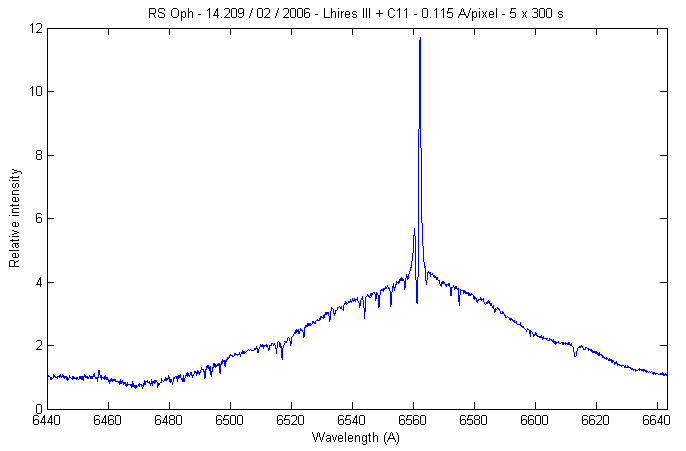
Cataclymic variable stars
Cataclymic variable stars (CVS) comprise the close binaries that contain a white dwarf accreting material transferred from a companion, usualy a late main-sequence star. CVS include novae, dwarf novae and nova-likes. The range of orbital period is large : from 80 minutes to over 2 days, with most being under 2 hours.
Some bright systems at the outburst (and reasonable magnitude at the quiescence phase): U Gem, SS Cyg, RU Peg, TT Ari, T Leo, LS Peg.
The spectral data were reduced in the standard
manner using Iris and VisualSpec. The instrumental response function was removed
from target spectra by using standard star spectra. The relative flux is normalized
at the wavelength 6630 angstroms. Click here for
a description of the spectrograph used.

At quiescence phase (Observer: A. Rondi, V. Desnoux, C. Buil at the 24-inch telescope of Pic du Midi) - M=12:
Near maximum phase (5-inch refractor at Castanet-Tolosan) - M=9.5 (estimated):
Note: change are considerable between quiescence and outburst. During outburst the Balmer emission lines turned into absorption and the system is largely more bluer.
At peak maximum (Observer: A. Rondi, V. Desnoux, C. Buil at the 24-inch telescope of Pic du Midi) - M=8.8:
At minimum (Observer: A. Rondi, V. Desnoux, C. Buil at the 24-inch telescope of Pic du Midi) - M=12.8 (estimated):